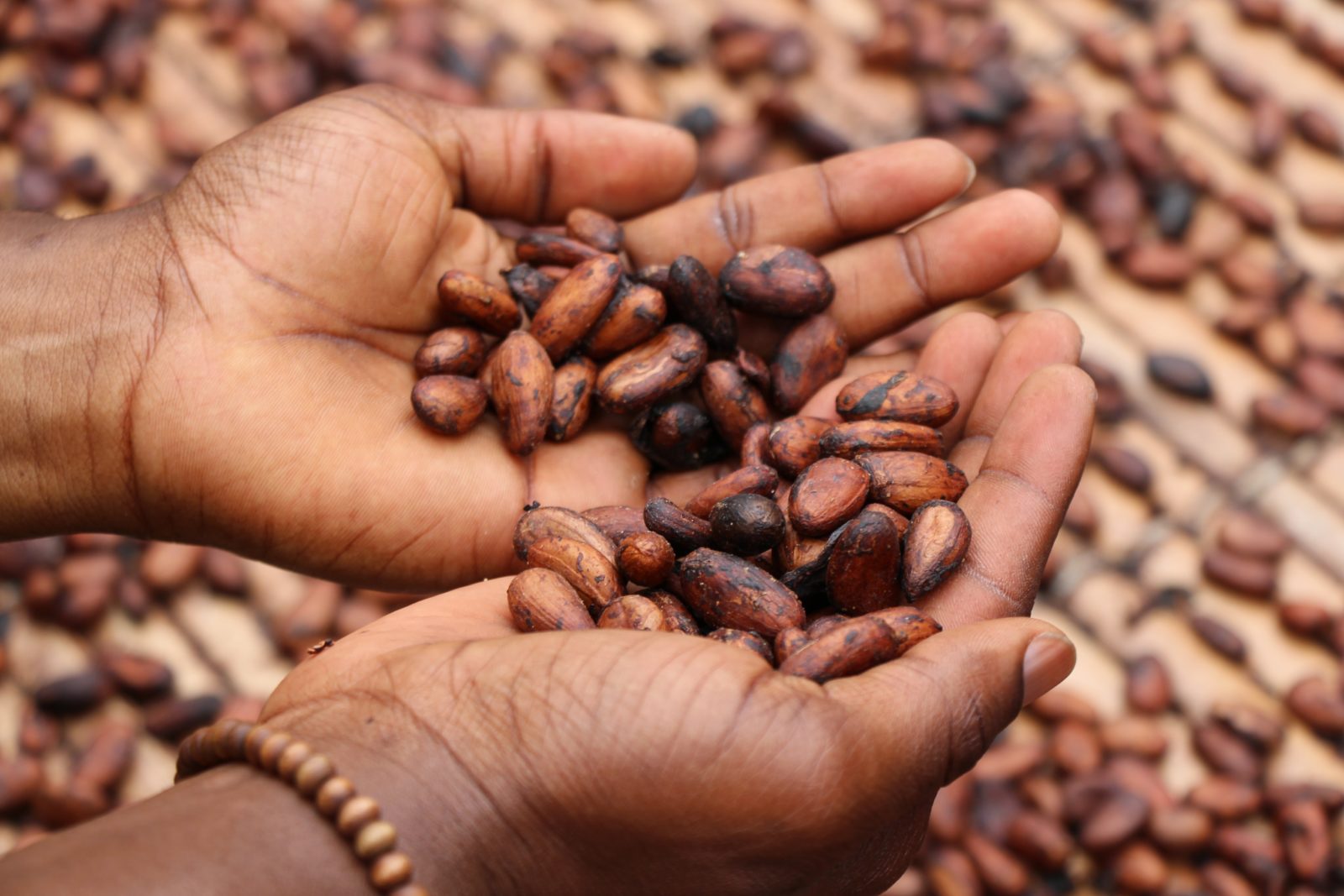We have much more to do and your continued support is needed now more than ever.
A Bittersweet Love Story: Chocolate, deforestation, and human rights.

How you choose your chocolate matters. We can help you make informed decisions.
It is that time of the year again. Shops fill with flowers and pink and red tones flood store windows. Cupid shoots his arrow to announce the return of the most romantic day of the year: Valentine’s Day. With it, the star of the show is back: chocolate, lavish amounts of it, wrapped in beautiful heart-shaped boxes.
Love can’t be measured, but the U.S.’s voracious appetite for chocolate can. In 2022, Americans spent $2.5 billion on chocolate for Valentine’s Day and a total of $18 billion over the entire year.
We won’t sugarcoat the truth.
While the passion for chocolate may seem harmless, in reality, these colossal numbers shed light on the magnitude of the problem behind the chocolate industry – human rights abuse and deforestation. But how can such a sweet treat have such a dark side? Let’s quickly dive into the history of chocolate and how it got here:
We attribute this delicacy to the ingenuity of ancient Indigenous communities in Central and South America, such as the Maya and the Aztecs, the first to convert the pods of the tropical cacao fruit into cocoa, the precursor to chocolate. After Europeans colonized North America and introduced chocolate to Europe, the taste for the delicacy spread throughout the continent. To keep up with the new high demand, cacao plantations were established in other tropical areas across the globe.

A heartless industry
Our insatiable love for chocolate has destructive consequences for nature and people in regions where cacao is cultivated. Most of the chocolate comes from the West African countries of Ivory Coast and Ghana, which together produce about two-thirds of the world’s cocoa. The Ivory Coast, the top cocoa producer in the world, lost more than 80% of its forest in the last 50 years due mainly to this commodity.
To grow cacao farms, forests are usually cleared, destroying native biodiversity, reducing associated ecosystem services and climate resilience, and releasing CO2 into the atmosphere. It is urgent to note that cacao is farmed primarily in biodiversity hotspots in West Africa, Southeast Asia, and South America, so habitat loss caused by land conversion for cacao farming has a devastating impact on wildlife and plant species, most of them endemic. And it is not only elephants, birds, and chimpanzees that are threatened by the expansive agriculture and cacao production: local communities, especially their children, also suffer from the greedy practices involved in chocolate production.
The dark side of chocolate
If you have a chocolate bar at home, chances are it is not made with love but is the product of human rights abuses, low pay, and child labor. In Ivory Coast and Ghana, most families who work on the cacao crops earn less than $1 a day, with many women cacao farmers making as little as $0.30 daily, an income below extreme poverty. This is crucial, as the low price of cocoa on the global market perpetuates structural poverty in the countries where it is produced. The desperate poverty of cocoa farmers also explains why children as young as five are exploited in the farms and exposed to agrochemical products and hazardous conditions, including using sharp tools, undertaking land clearing activities, and working long hours or at night, unable to attend school.
According to a 2020 report by the U.S. Department of Labor, more than 1.56 million children were engaged in dangerous labor in cocoa-growing regions, and a percentage of those children have been trafficked in and held as slaves.
But it doesn’t have to be this way. Cacao can be grown without exploitation or deforestation. And more than that, it can be grown sustainably, preserving biodiversity and improving farmer livelihoods. Over a thousand years ago, the Maya and Aztecs planted cocoa trees under the canopy of the forest, and today, the best cocoa comes from shade-grown agroforestry, a similar farming method, where shrubs and trees grow among the main crop. Agroforestry has numerous environmental benefits, like carbon sequestration, soil health, nitrogen fixation, water regulation, erosion control, and, most importantly, it’s a major boost for biodiversity.

Your actions can change the system!
Consumers’ choices are a vital part of the solution. Here are two things that you can do to make a difference:
Buy ethical and environmentally friendly chocolate.
Your chocolate purchase can have a positive or negative impact. To help consumers find chocolate makers that support wildlife and people, the National Wildlife Federation worked with other NGOs to create a chocolate shopping guide, ranking more than 80 percent of global chocolate brands based on their social and environmental performance.
Take Action.
Demand the billion-dollar chocolate industry to stop exploiting nature, farmers, and children. Consumer demands can enormously impact companies and governments, who are pushed to act when consumers advocate for sustainable change. Urge Congress to support the FOREST Act to stop deforestation and the imports of products produced on illegally-cleared forestland around the world.
Life is like a box of chocolates, but you can decide what type you get. Buy consciously. Spread the love this Valentine’s Day.


















